Related Research Articles
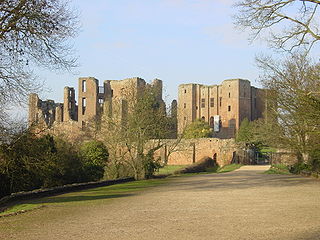
The Dictum of Kenilworth, issued on 31 October 1266, was a pronouncement designed to reconcile the rebels of the Second Barons' War with the royal government of England. After the baronial victory at the Battle of Lewes in 1264, Simon de Montfort took control of royal government, but at the Battle of Evesham the next year Montfort was killed, and King Henry III restored to power. A group of rebels held out in the stronghold of Kenilworth Castle, however, and their resistance proved difficult to crush.
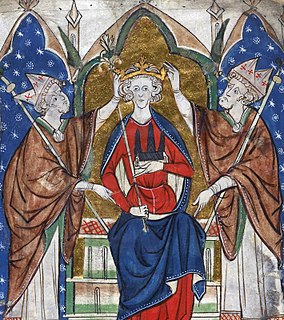
Year 1216(MCCXVI) was a leap year starting on Friday of the Julian calendar.

Year 1217 (MCCXVII) was a common year starting on Sunday of the Julian calendar.

Louis VIII, nicknamed The Lion, was King of France from 1223 to 1226. From 1216 to 1217, he invaded and claimed the Kingdom of England. Louis participated in the Albigensian Crusade in southern France, driving it to its successful and deadly conclusion. He was the only surviving son of King Philip II of France by his first wife, Isabelle of Hainaut, from whom he inherited the County of Artois.
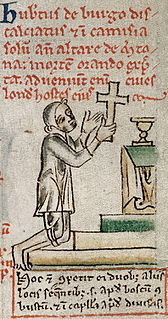
Hubert de Burgh, 1st Earl of Kent was an English nobleman who served as Chief Justiciar of England and Ireland during the reigns of King John and of his infant son and successor King Henry III and, as a consequence, was one of the most influential and powerful men in English politics.
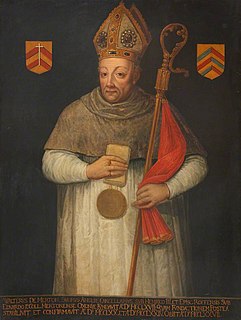
Walter de Merton was Lord Chancellor of England, Archdeacon of Bath, founder of Merton College, Oxford, and Bishop of Rochester. For the first two years of the reign of Edward I he was - in all but name - Regent of England during the King's absence abroad. He died in 1277 after falling from his horse, and is buried in Rochester Cathedral.
The Treaty of Troyes was an agreement that King Henry V of England and his heirs would inherit the French throne upon the death of King Charles VI of France. It was formally signed in the French city of Troyes on 21 May 1420 in the aftermath of Henry's successful military campaign in France. It forms a part of the backdrop of the latter phase of the Hundred Years' War finally won by the French at the Battle of Castillon in 1453, and in which various English kings tried to establish their claims to the French throne.
Eustace the Monk, born Eustace Busket, was a mercenary and pirate, in the tradition of medieval outlaws. The birthplace of Eustace was not far from Boulogne. A 1243 document mentions a Guillaume le Moine, seigneur de Course, which indicates that the family lived in that vicinity.

The First Barons' War (1215–1217) was a civil war in the Kingdom of England in which a group of rebellious major landowners led by Robert Fitzwalter waged war against King John of England. The conflict resulted from King John's disastrous wars against King Philip II of France, which led to the collapse of the Angevin Empire, and John's subsequent refusal to accept and abide the "Magna Carta", which he had sealed on 15 June 1215.
The Treaty of York was an agreement between the kings Henry III of England and Alexander II of Scotland, signed at York on 25 September 1237, which affirmed that Northumberland, Cumberland, and Westmorland were subject to English sovereignty. This established the Anglo-Scottish border in a form that remains almost unchanged to modern times. The treaty detailed the future status of several feudal properties and addressed other issues between the two kings, and historically marked the end of the Kingdom of Scotland's attempts to extend its frontier southward.

Sir Falkes de Bréauté was an Anglo-Norman soldier who earned high office by loyally serving first King John and later King Henry III in the First Barons' War. He played a key role in the Battle of Lincoln Fair in 1217. He attempted to rival Hubert de Burgh, and as a result fell from power in 1224. His "heraldic device" is now popularly said to have been a griffin, although his coat of arms as depicted by Matthew Paris in his Chronica Majora was Gules, a cinquefoil argent.

The Second Battle of Lincoln occurred at Lincoln Castle on Saturday 20 May 1217, during the First Barons' War, between the forces of the future Louis VIII of France and those of King Henry III of England. Louis's forces were attacked by a relief force under the command of William Marshal, 1st Earl of Pembroke. Thomas, the Comte du Perche, commanding the French troops, was killed and Louis was expelled from his base in the southeast of England. The looting that took place afterwards is known as the "Lincoln Fair". The citizens of Lincoln were loyal to Louis so Henry's forces sacked the city.

Guala Bicchieri was an Italian diplomat, papal official and cardinal. He was the papal legate in England from 1216 to 1218, and took a prominent role in the politics of England during King John’s last years and Henry III’s early minority.
Events from the 1490s in England.
Events from the 1210s in England.
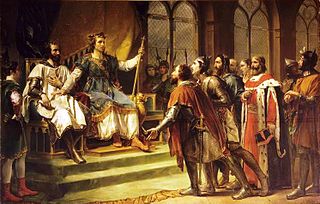
The Mise of Amiens[miz ɒv a.mjɛ̃] was a settlement given by King Louis IX of France on 23 January 1264 in the conflict between King Henry III of England and his rebellious barons, led by Simon de Montfort. Louis' one-sided decision for King Henry led directly to the hostilities of the Second Barons' War.

The Anglo-French War was a major medieval conflict which pitted the Kingdom of France against the Kingdom of England and various other states. It was fought in an attempt to curb the rising power of King Philip II of France and regain the Angevin continental possessions King John of England lost to him a decade earlier. It is widely regarded as the very first anti-French coalition war and came to an end at the decisive Battle of Bouvines, where Philip defeated England and its allies.
The Treaty of Lambeth was signed on 4 May 1212 by King John of England and several French counts, including Renaud I of Dammartin and Boulogne and Ferdinand of Flanders. The Treaty of Lambeth of 1212 should not be confused from the Treaty of Lambeth of 1217, also known as the Treaty of Kingston.
Geoffrey de Neville was an English nobleman who served as King's Chamberlain and Seneschal of Gascony and Périgord.
References
- ↑ "Kingston, treaty of" A Dictionary of British History. Ed. John Cannon. Oxford University Press, 2009
- ↑ Smith, J. Beverley (July 1979). "The Treaty of Lambeth, 1217". English Historical Review. Oxford University Press. 94: 562–579. doi:10.1093/EHR/XCIV.CCCLXXII.562.
- ↑ Tout, T.F. A History of England. ISBN 1-4510-1261-6.
- ↑ "England: Louis of France's Claim to the Throne of England: 1216–1217". Archontology.org. Retrieved 30 May 2012.
- ↑ James H. Ramsay. The Dawn of the Constitution. pp. 13–17.
- ↑ "Years 1200 to 1224". Episodes of Medieval History: Timeline 1200 to 1299. Retrieved 30 May 2012.
- ↑ Hersch Lauterpacht (1957). Volume 20 of International Law Reports. Cambridge University Press. p. 128. ISBN 0-521-46365-3.
- ↑ Powicke